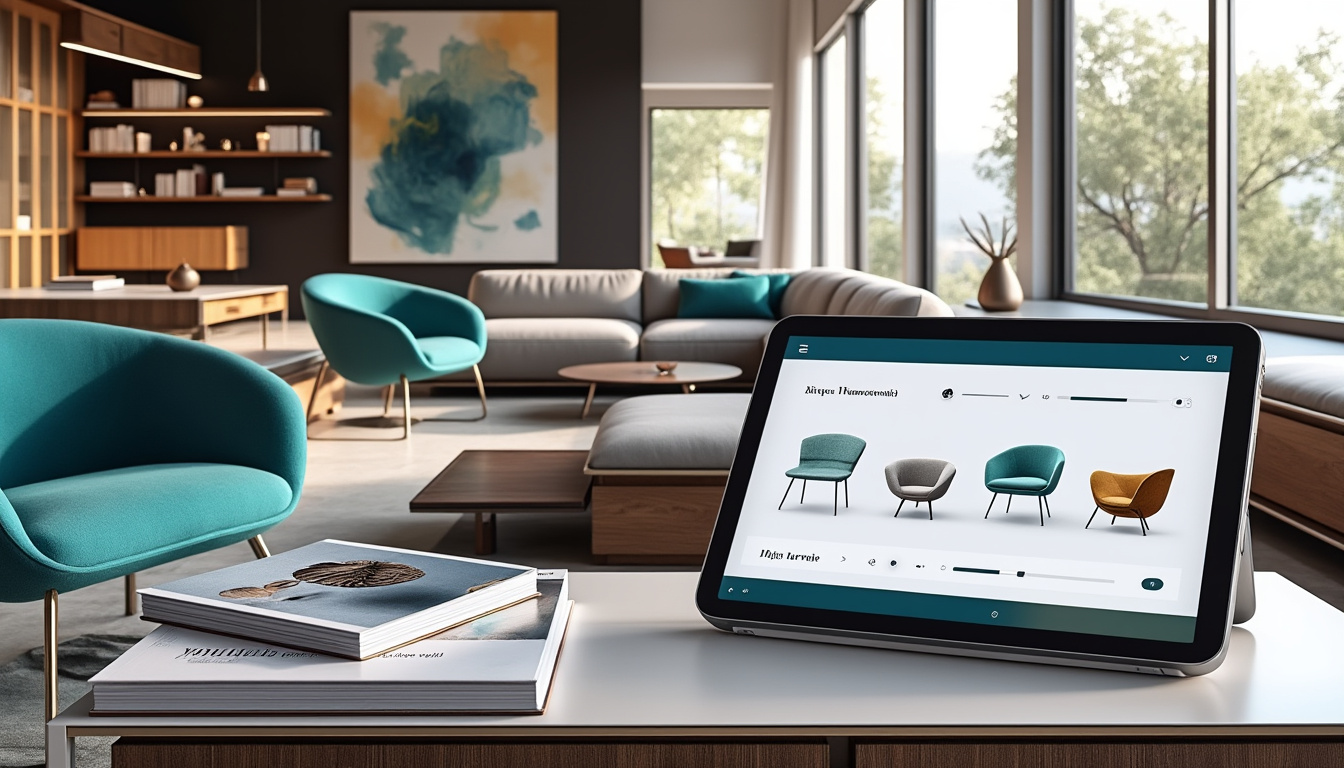Lexington Home Brands is responding to a growing demand for customization in the furniture industry with the launch of a new digital customization tool. It allows customers to visualize and customize their furniture with fabrics of their choice, making the shopping process more interactive and tailored to individual tastes.
The Benefits of Digital Customization in Furniture
Digital customization offers numerous benefits for both consumers and furniture suppliers. Thanks to this technology, it is now possible to design unique pieces that reflect individual lifestyles and aesthetic preferences. This marks a turning point in the interior design industry, where uniformity is gradually giving way to individuality.
An Improved User Experience
For consumers, using a customization tool like the one offered by Lexington Home Brands transforms the shopping experience. By allowing customers to upload fabric images and visualize them on the furniture of their choice, this tool makes the process both creative and engaging. Users can visualize their designs in photorealistic detail, contributing to more informed decision-making.
This approach also appeals to interior designers, who can offer innovative and tailor-made solutions to their clients. The tools are now accessible without the need for specialized software, lowering the barriers to entry for customization.
Reducing errors and risks
Thanks to this technology, the risk of errors when ordering custom furniture is significantly reduced. Before the advent of such tools, customers had to rely on physically present fabric samples, which could lead to misunderstandings about colors, patterns, and textures. With Lexington’s new tool, real-time visualization allows for fabric selection adjustments before finalizing an order.
Impact of Innovation on the Furniture Market
The launch of the digital customization tool in 2025 signals a major milestone in innovation in the furniture industry. Current trends show a shift toward products that are not only functional, but also highly personalized. Consumers are looking for items that reflect their personality, making customization an essential aspect of modern design.
Technology Adoption by Brands
More and more furniture brands are adopting similar digital tools to remain competitive. The industry is rapidly transforming thanks to technologies such as artificial intelligence and augmented reality, allowing customers to visualize furniture in their own spaces before making a purchase. This not only provides an engaging experience, but also helps companies gather valuable data on consumer preferences.
Companies that integrate these innovations into their marketing and sales strategies are able to effectively meet the growing demand for personalization. This also allows them to improve their offerings and position themselves as leaders in a changing market.
Concrete examples of successful personalization
Other companies in the sector, such as IKEA and Roche Bobois, have also developed digital customization solutions that have proven effective. For example, IKEA’s app allows users to create virtual spaces that reflect their personal style. Customers can choose from a variety of fabrics and finishes, instantly seeing how each option changes the final appearance of the furniture.
Future Outlook for Digital Personalization
By 2025, digital customization is poised to become the norm in the furniture industry. As Lexington Home Brands continually improves its tools, it is essential to consider future applications of this technology.
Integration with Other Technologies
An emerging trend is the integration of customization tools with advanced artificial intelligence systems, which could predict user preferences based on their purchase history and interactions. This could evolve the concept of customization from a simple aesthetic choice to an experience that anticipates customer needs and desires. Furthermore, integration with virtual reality platforms could offer total immersion in interior design, allowing users to visualize their project in a simulated environment. This amplifies customer engagement and makes the purchasing process even more interactive.
Challenges to Overcome
Despite the immense potential, challenges remain. Managing returns on custom orders presents a barrier, as each piece is unique. For companies, the challenge is to find a balance between customization and operational efficiency without compromising the quality of customer service.
Sustainability is also a growing concern. Consumers are increasingly concerned about the environmental impact of their interior design choices. Brands must therefore find ways to integrate sustainable materials into their customization options.
Conclusion on the impact of digital customization on furniture




